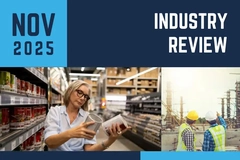
- Industry news
Industry news
- Category news
- Reports
- Key trends
- Multimedia
Multimedia
- Journal
- Events
- Suppliers
Suppliers
- Home
- Industry news
Industry news
- Category news
- Reports
- Key trends
- Multimedia
Multimedia
- Events
- Suppliers
Suppliers
UN INC-2: Researchers call for reusable packaging revolution through four-phase rollout

31 May 2023 --- As government representatives meet in Paris, France, to negotiate a legally binding global plastics treaty this week, the Global Plastics Policy Centre at the University of Portsmouth, UK, is making the case for a transition from single-use packaging to reusable options in its latest report.
The study – commissioned by Break Free From Plastic – consolidates 320 articles and papers, and 55 new interviews with global reuse experts, to suggest a universal definition of reuse systems and, for the first time, assess how all nations can move away from throwaway packaging.
The researchers define “reuse systems” for packaging as a “comprehensive system designed for multiple circulations of reusable packaging, which remains in the ownership of the reuse system and loaned to the consumer.”
But Tiza Mafira, executive director at Gerakan Indonesia Diet Kantong Plastik, says reuse is about much more than simply packaging.
“It is a system that needs all players in a global supply chain to take part. That’s why reuse needs to be right at the heart of the plastic treaty discussions this week, so that the operational nuts and bolts can be agreed, and reuse can thrive and scale,” she explains.
The report highlights that transitioning to a reuse system economy requires completely replacing single-use packaging.
Von Hernandez, global coordinator at Break Free From Plastic, states: “The scourge of single-use packaging continues to grow at a pace beyond the capacities of existing waste management systems.”
“Prevention is key – ramping up reuse systems is the most sensible approach to replacing single-use plastics and dramatically cutting plastic production. The plastics treaty discussions this week must lay the groundwork for this transformation.”
 Innova Market Insights dubbed “Reusable revival” as a top packaging trend for 2023.Systematic approach
Innova Market Insights dubbed “Reusable revival” as a top packaging trend for 2023.Systematic approach
According to the researchers, the path to a mass adoption of reuse systems should roll out in four phases, starting with large venues such as sports arenas and music festivals, which have breakthrough potential to build public acceptance – a challenge identified by three-quarters (74%) of the reuse experts interviewed.
They find that delivery firms will have a significant role in the return and reuse economy, collecting used packaging while making deliveries.
“Widespread change will take time, the researchers concede, but closed environments like schools, hospitals, events and food courts are relatively easy to shift to zero waste packaging, as is the drinks sector, where some reuse brands already achieve high return rates,” shares Break Free From Plastic.
“Harder will be the fast-food sector where packaging often ends up scattered. ‘Rentable packaging’ could help, where customers order through apps and are charged a small fee if they do not return the packaging.”
Meanwhile, a majority (82%) of the interviewed experts are concerned about the higher costs and infrastructure changes of reusable packaging, while many also fear hygiene negligence and loss of brand identity. Interviewees “strongly criticize” governments for lacking vision and over-investing in recycling and incineration, which they identify as barriers to reuse.
“This study is a significant evidence-based global assessment of how to swap wasteful single-use packaging for reuse systems,” notes professor Steve Fletcher, director of the Global Plastics Policy Centre at the University of Portsmouth.
“It shows that there is no one-size-fits-all packaging material or system for reuse, but we know that it has to fit seamlessly into people’s lives and that has huge untapped potential to end plastic pollution. What we need now is a clear vision for reuse and the right support to mainstream it.”
Research spotlights
The report’s key findings can be summarized as: Reuse is a system, not isolated actions or products. Tailored reuse systems are needed in critical economic sectors as, at present, there is no single reuse system that can be applied in all scenarios.
An environmentally sustainable reuse system only exists once a sustainability breakeven point is exceeded. End-of-use context is critical for the design of packaging return pathways, consumer behavior and achieving a return rate of over 90%.
Additionally, according to the findings of the report, national action is needed to support fair and just reuse systems that support local communities.  The researchers propose rentable packaging for fast-food sector resuability.
The researchers propose rentable packaging for fast-food sector resuability.
A global framework, including a shared reuse system vision, agreed standards, definitions and monitoring, is needed to drive coherent international reuse system action.
Avoiding greenwashing
The “Making Reuse a Reality” report advocates for a world where all packaging is chipped or tagged and can be dropped into smart bins, cleaned and pooled at centralized hubs before being delivered back to factories and retailers.
The researchers find that next-generation packaging should be standardized, stackable and electronically tagged. It must be durable, lightweight, washable and non-toxic, but the authors also recognize that reuse systems will vary by sector.
They note that a phased approach is needed to deliver an economy-wide change from single-use to reusable packaging systems that significantly reduce impacts on our climate, environment, biodiversity and health.
Fundamental to viable reuse systems, according to the study, is rentable packaging that is reused multiple times until a sustainability breakeven point is achieved.
“A sustainability breakeven point should be specified for all reusable items to avoid greenwashing, with a second target for additional reuse cycles through the system, over and above the sustainability breakeven point specified,” the report states.
Furthermore, global market researcher Innova Market Insights dubbed “Reusable revival” as a top packaging trend for 2023. The researcher highlighted that reusability is seen as an important packaging-related purchasing influence by 43% of global consumers – the most widely highlighted aspect and on par with hygiene (42%) and shelf life (42%).
The most common reasons for consumers not adopting reusable packaging systems are lack of availability and hygiene, with 29% of global consumers pinpointing these concerns.
By Radhika Sikaria











